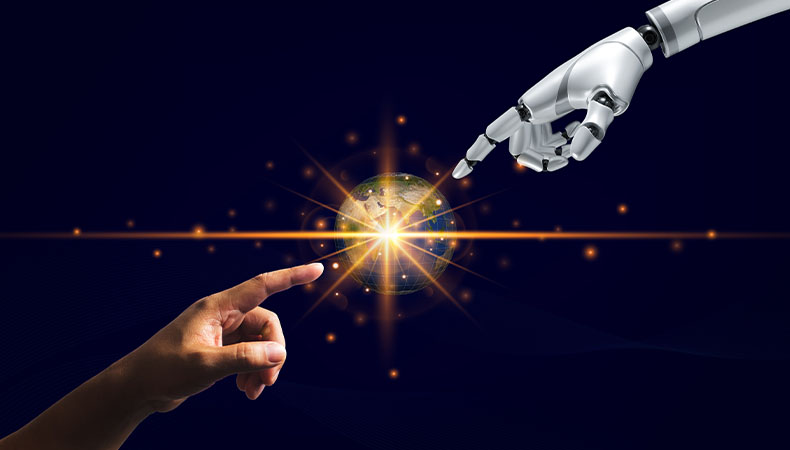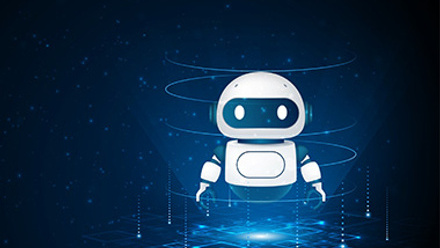3 ways to leverage AI in employee rewards and recognition
Employee recognition must be meaningful and heartfelt for it to be effective.
Every time an employee is recognised for their great work, a very real and authentic connection is made as a result.
But with AI rapidly transforming many aspects of the workplace, including the employee reward and recognition space, ensuring that rewarding and recognising employees is authentic and impactful must remain a key priority.
AI’s capacity for analysing vast amounts of data, identifying patterns and offering insights that replicate human intelligence, has made this rapidly evolving technology a game-changer in rewards and recognition.
However, this isn’t to say that AI can necessarily recreate the evocative, meaningful and celebratory content that is pivotal to delivering effective rewards and recognition to employees.
It is essential to understand where AI fits into the future of rewards and recognition and learn how we can balance its capabilities with human empathy to ensure that recognition stays genuine and impactful.
1. Ensuring recognition is delivered at the right time
When recognition is delayed, the value and impact of it decreases, risking demotivation and disengagement.
Prompt recognition allows both the recipient and the sender to retain the specific actions and behaviours relating to the recognition, increasing the likelihood that the behaviour is repeated in future.
AI’s capabilities can be leveraged in this instance to alert managers as to the optimal time that an employee should receive recognition.
This could be because they have made good progress towards a goal, accomplished a goal, were recognised by someone else or have not been recognised recently.
When timely recognition is assessed by a human, several considerations, such as whether the situation is an appropriate time to recognise an employee, or whether the act of recognition is coming too early or too late, must be made.
2. Making recognition more meaningful and personalised
Meaningful recognition must be specific, authentic and personal to evoke genuine human connection.
Understanding how employees like to receive recognition is also critical to the success of a rewards programme.
While one person may enjoy public recognition, another may favour a more private, one-on-one approach.
Personalising your approach to recognition, therefore, demonstrates that an employer values and understands the individual, increasing how meaningful it is.
When employees feel seen and valued as individuals, they are more likely to stay engaged and committed to the organisation, building trust and loyalty in the process.
No matter how embedded recognition is within a workplace, it can sometimes be a rushed process; other demands of the working day may mean that sometimes people need a nudge to provide more detail when writing their recognition.
AI can help by alerting the author to be more specific or provide prompts to encourage people to use their creativity to deliver a more detailed message.
AI can also be used to inform managers of how their employees like to be recognised, supporting the overall process of creating personalised instances of recognition.
It is, however, up to the manager to use their emotional intelligence to create a recognition moment that is both personalised and meaningful to the recipient.
3. Ensuring recognition is comparable to the effort
Over and under-awarding can both undermine motivation, performance and workplace dynamics, therefore appropriate recognition must be determined to ensure its effectiveness.
While over-awarding can create short-term motivation boosts, over a prolonged period it can lead to unrealistic expectations, where employees might come to expect even greater rewards for similar achievements.
Overly frequent recognition can also lead to a situation where employees are desensitised to its impacts, diminishing intrinsic motivation, and reducing the joy and satisfaction derived from the work itself.
The reverse can be true of under-awarding.
In this context, AI can suggest appropriate awards based on the type of achievement and size of the goal, easing the task of deciding whether an employee is being under or over rewarded.
While this can be difficult to determine objectively by a human, empathy also remains critical when it comes to appropriate recognition and reward.
It is still important for the organisation to fully understand how employees perceive the value of the recognition they receive in order to amend processes accordingly.
Striking the right balance
As AI continues to evolve, it will play an increasingly prominent role in shaping workplace culture, especially in areas such as employee engagement and recognition.
AI is a powerful tool, but human judgment and empathy remain irreplaceable in the recognition process.
While AI can automate tasks, suggest improvements, and guide recognition efforts, the human touch is essential for ensuring that recognition is authentic, emotional, and impactful.
The future of reward and recognition technology lies in integrating AI to create meaningful recognition whilst preserving the authenticity that makes employees feel truly valued.
Organisations that embrace this balance will be well-positioned to foster a positive and productive work environment, where AI and humans can collaborate to create recognition moments that are efficient, heartfelt, and effective.
Supplied by REBA Associate Member, BI WORLDWIDE
BI WORLDWIDE is a global engagement agency delivering measurable results for clients through inspirational employee and channel reward and recognition solutions.








